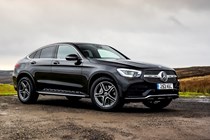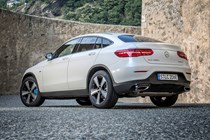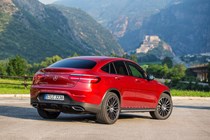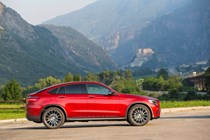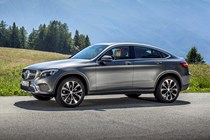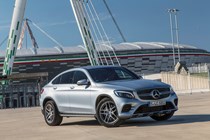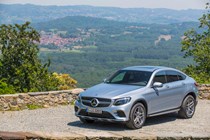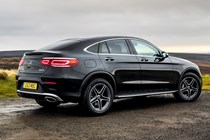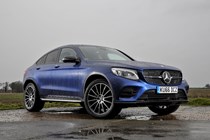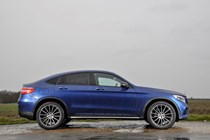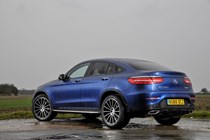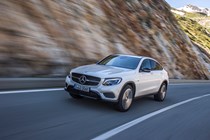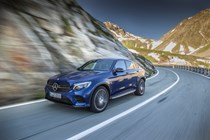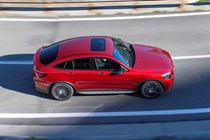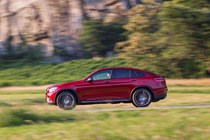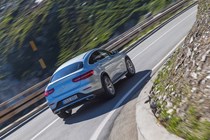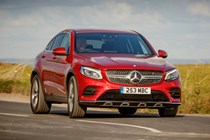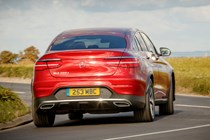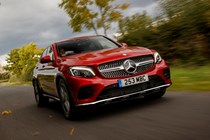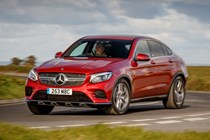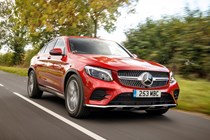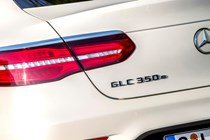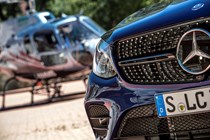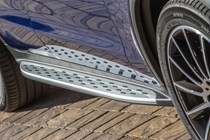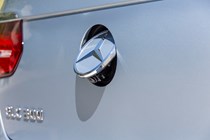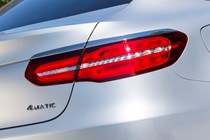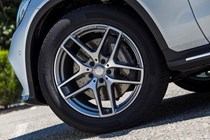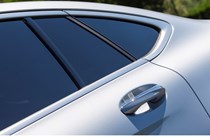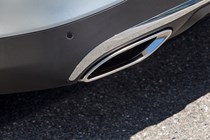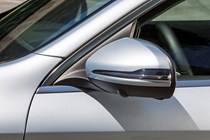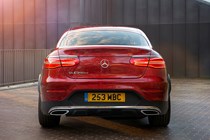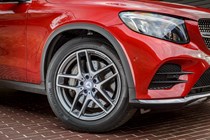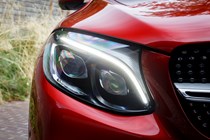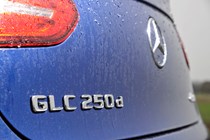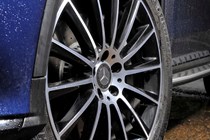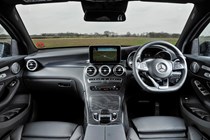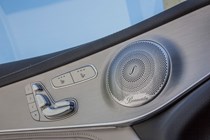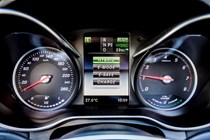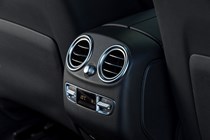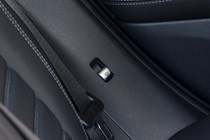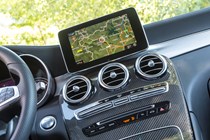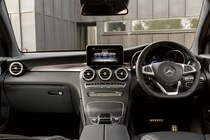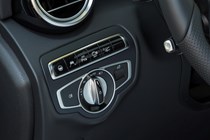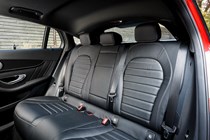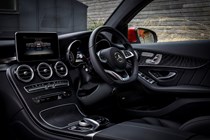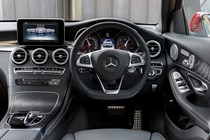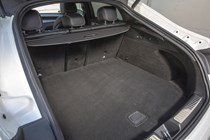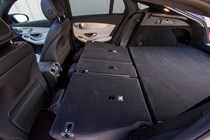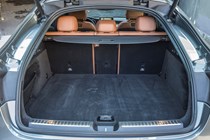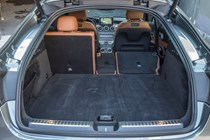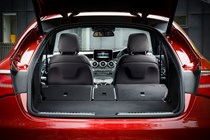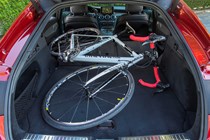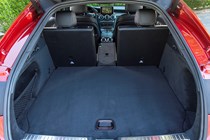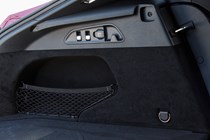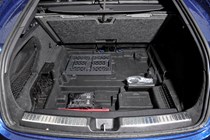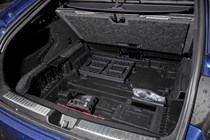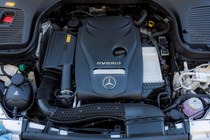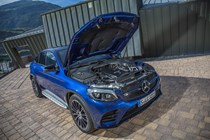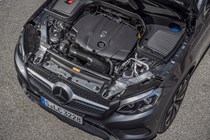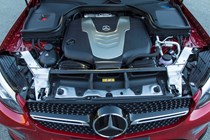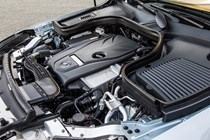
Mercedes-Benz GLC-Class Coupe (2016-2023) engines, drive and performance
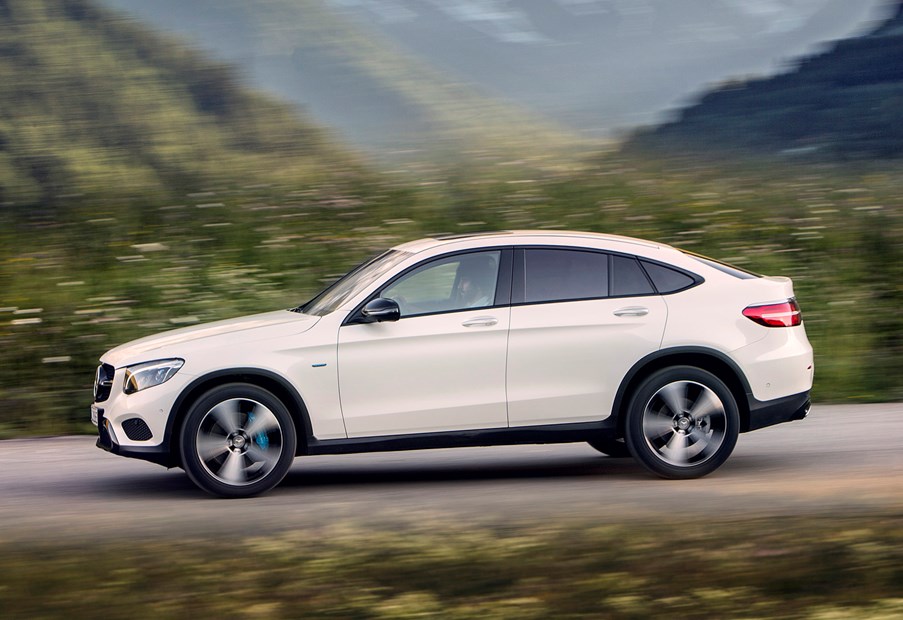
- Two diesels, one petrol at the core of the model range
- AMGs come in various flavours, all hot
- Plug-in hybrid offers 27-miles of battery-only range
The Mercedes-Benz GLC Coupe is very on-trend, offering petrol, diesel, performance and plug-in hybrid versions.
>> We rate the best hybrid SUVs for 2020
Plug-in hybrid added in 2020
Newest model in the GLC Coupe range is the plug-in hybrid version, the GLC 300 e. It shares its PHEV tech with the E 300 e model, and that means it packs a 13.5kWh battery for the hybrid system. Mercedes-Benz says it’s good for 24-27 miles of pure electric range, which means it lags someway behind rivals from BMW and Land Rover. An on-board 7.4kW charger means that wallbox charging takes around two hours at 7kWh or five hours with a domestic three-pin plug.
Performance looks useful – it has a combined petrol/electric power output of 320hp, which results in a 0-62mph time of 5.7s and a maximum speed of 143mph. There’s oodles of pulling power, too, with 700Nm of torque, which helps the GLC 300 e Coupe to a towing capacity of 2,000kg.
Petrol GLC Coupe – 300, AMG 43 and 63
A 2.0-litre petrol badged as GLC 300 Coupe is your only non-AMG offering if you want a petrol version. It’s capable of 0-62mph in 6.3 seconds and produces 262hp. It’s a mild hybrid, which uses a combination starter/alternator unit that, while not capable of running the car on electric power alone, aids the engine’s response at low rpm. It also allows the stop/start to cut in sooner, saving fuel.
Next up, there are the flagship AMG models – the GLC 43, 63 and 63 S. The smaller engine is a 3.0-litre, which packs a useful 390hp. Performance is a step up from the 300, with a 0-62mph time of 4.9 seconds and a limited maximum speed of 155mph.
Topping the GLC Coupe range is the AMG 63. With 4.0-litres, eight cylinders, and twin turbos, it’s pretty special. It develops 476hp in regular 63 form, and 510hp in the S. The 63 S hits 62mph from rest in 3.8 seconds, and while the top speed is limited to 155mph it can be raised to 174mph if the optional Driver’s Package is specced.
The 4.0-litre V8 is everything you’d hope – incredibly potent, with an amazing soundtrack and excellent response from the throttle. We’d definitely rank the AMG GLC models as equals to the Alfa Romeo Stelvio Quadrifoglio or Jaguar F-Pace SVR.
Diesel engines
There are two diesels to choose from – the 220 d and 300 d. Both are the same 2.0-litre four-cylinder turbos, but with two different power outputs. The 220 d develops 194hp and is good for a top speed of 134mph. The 245hp 300 d is another quick SUV, with a 0-62mph time of 6.5 seconds.
Neither diesel is particularly refined, and you’ll never forget it’s fuelled at the black pump. It has a clattery, metallic soundtrack at low revs, but at least it’s quiet inside because it’s well insulated. Despite the lack of refinement, there’s no denying that the GLC Coupe is a relaxing long-distance tourer.
All GLC Coupes regardless engine have a nine-speed automatic gearbox and 4Matic four-wheel drive, though AMG cars receive an uprated transmission to cope with all that power.
Handling
- Sportier to drive than the regular GLC
- Air Body Control suspension a worthwhile option
- Not especially capable off-road
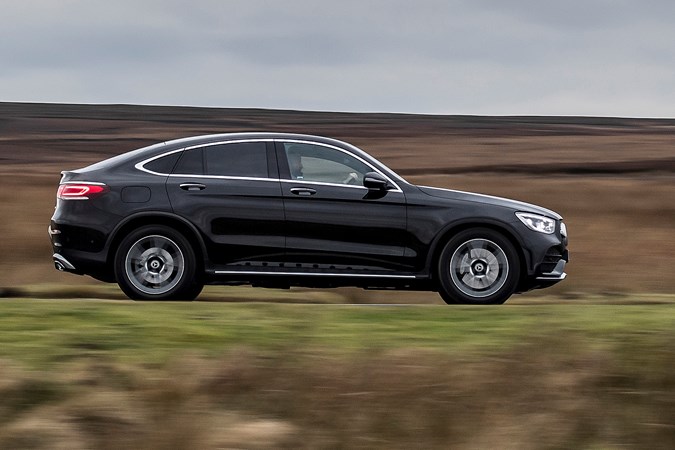
Make no mistake: the Mercedes-Benz GLC Coupe is a sportier car than its SUV stablemate. As standard the GLC Coupe comes with a lowered sports suspension arrangement regardless of trim level – while on its SUV sibling, this comes as standard only in AMG Line guise.
We’ve only driven the Coupe on its optional air springs (detailed below) but previously sampled the standard sports set-up in the SUV, and found it a little firm and unforgiving on the UK’s pock-marked roads. However, it is undeniably capable of containing body roll when cornering briskly, and it rides adequately well on longer motorway slogs.
Optional Air Body Control suspension
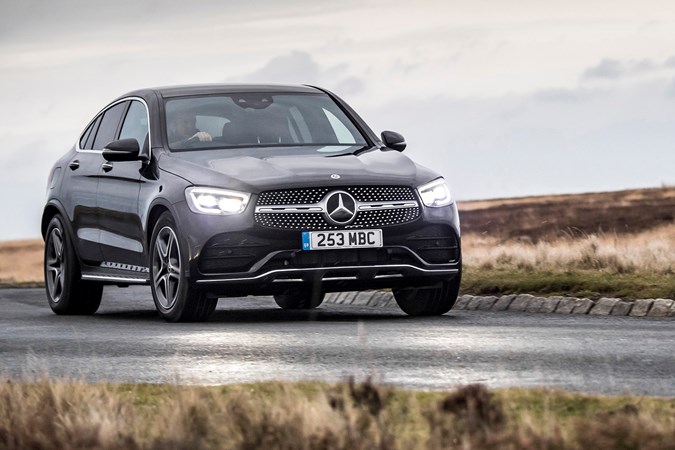
As the name implies, the Air Body Control air-sprung suspension system replaces conventional metal coils with flexible pods compressing the gas within. Not only that, but it’s adaptable, too.
Many cars come with adaptive suspension settings these days and on several it’s difficult to feel any perceptible change. Not so with Mercedes’ system.
Accessible through the Dynamic Select controller – which also varies other parameters such as throttle and transmission response as well as steering weighting – the firmness of the suspension can be varied from Comfort at the softer end of the scale, through Sport and Sport+ at its firmest.
Comfort is sublime at soaking up all manner of ruts and bumps, isolating driver and passengers from the road, and allowing the GLC to float and roll a little more through bends. One word of caution from experiences of other Mercedes models fitted with such systems – that floatiness can make those prone to travel sickness feel on the woozy side when left in Comfort.
Flick it into Sport and it remains comfortable but you’re significantly more aware of the road’s imperfections, albeit with their sharpness dulled by the suspension. It feels tauter and much more at home threading its way around winding ribbons of asphalt.
If you only specify one extra-cost option for the GLC Coupe, ensure it is Air Body Control.
Limited off-roading capabilities
Despite its elevated ride height and standard four-wheel drive, the GLC Coupe is not a bona fide off-roader. Best to think of it as something that will cope with forest tracks and green lanes more than a car in which to scale majestically rocky landscapes.
Four-wheel drive does come to the fore on-road, though, the extra security of the additional traction allowing the GLC Coupe to corner quickly without feeling as though you’re on the edge of adhesion.


